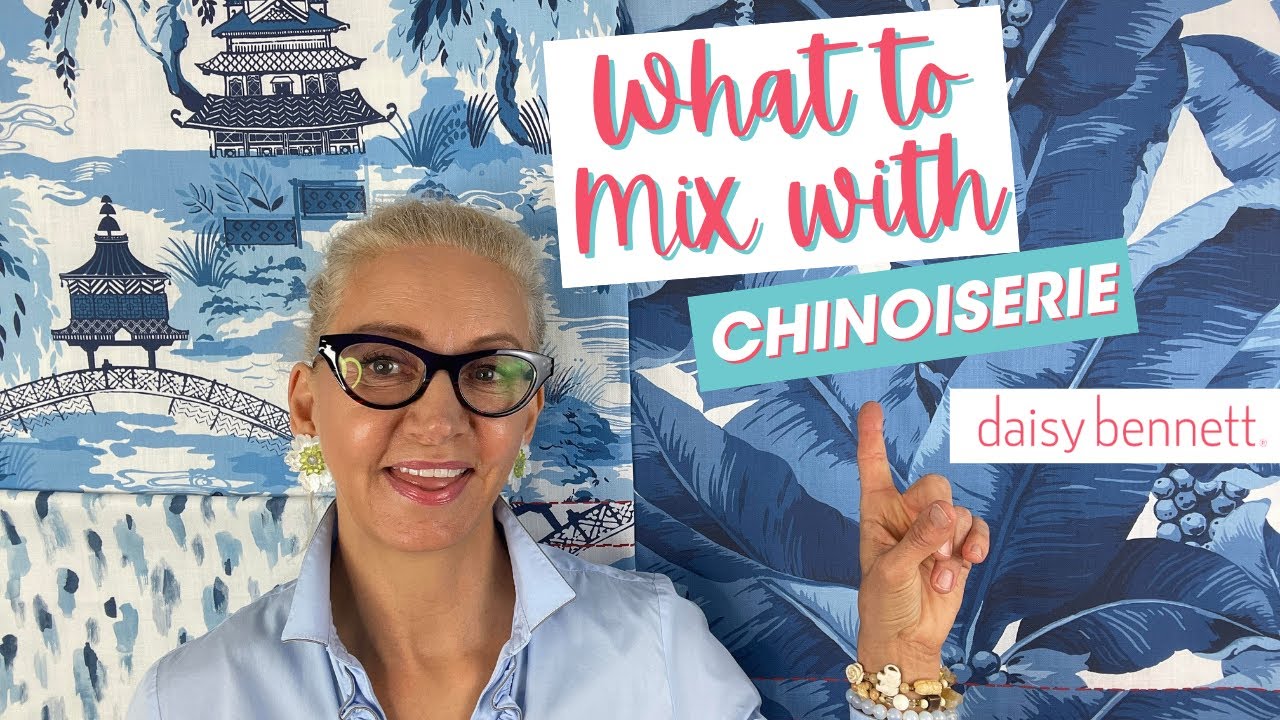Fabric Chinoiserie: Step into a world of timeless elegance with chinoiserie fabric, a captivating blend of Eastern-inspired motifs and exquisite craftsmanship. This enchanting fabric is infused with a rich cultural history and evokes a sense of tranquility and grace that is sure to captivate your senses. With its intricate patterns and delicate color palette, chinoiserie effortlessly combines the allure of the Orient with a touch of European sophistication.
Immerse yourself in the allure of chinoiserie fabric as it transports you to a realm where nature and art intertwine in perfect harmony. Each thread is meticulously woven to recreate the beauty of blooming flowers, majestic birds, and serene landscapes, creating a truly mesmerizing effect. The intricate designs and meticulous attention to detail make chinoiserie fabric a true work of art, bringing a touch of opulence and refinement to any space.
Indulge in the luxurious feel of chinoiserie fabric as it drapes effortlessly, lending an air of sophistication to your home décor. Whether used for upholstery, curtains, or pillows, this fabric exudes an understated elegance that is both timeless and versatile. Its soft texture and high-quality construction ensure durability and comfort, allowing you to enjoy its beauty for years to come.
Experience the allure of the Far East with chinoiserie fabric, a captivating blend of Eastern artistry and European refinement. Elevate your interior design with this exquisite fabric, and let its intricate patterns and delicate colors transport you to a world of beauty and serenity.

The History of Fabric Chinoiserie
Fabric chinoiserie is a style that has captivated the world of design for centuries. Originating from the French word “chinois,” meaning Chinese, chinoiserie refers to the European interpretation and imitation of traditional Chinese artistic styles. This art form emerged in the 17th century and quickly gained popularity among the European elite. Today, fabric chinoiserie continues to be sought after for its intricate designs and timeless beauty.
The Influence of Chinese Art
Chinese art has long been admired for its elegance and sophistication. During the 17th century, European traders brought back various Chinese goods, including porcelain, silk, and lacquerware. These exotic imports sparked a fascination with Chinese culture and aesthetics, leading to the development of chinoiserie in Europe.
The intricate patterns and motifs found in Chinese art served as inspiration for fabric chinoiserie. Designs often featured elements such as pagodas, dragons, birds, flowers, and landscapes. These motifs were meticulously hand-painted onto fabric, creating visually stunning patterns that were highly sought after.
The Rise of Chinoiserie in Europe
Chinoiserie quickly gained popularity among the European elite, particularly in France and England. The trend was fueled by the demand for luxury goods and the desire to emulate the elegance and sophistication associated with Chinese culture.
In France, chinoiserie became particularly prevalent during the reign of Louis XV. The king’s love for all things exotic led to the creation of the famous porcelain factory in Sèvres, which produced exquisite chinoiserie-inspired pieces. These designs heavily influenced the fabric industry, with chinoiserie patterns adorning clothing, upholstery, and wallpaper.
In England, chinoiserie gained prominence during the 18th century. The British East India Company’s trading activities with China brought a wave of Chinese goods to the country, further fueling the popularity of chinoiserie. Fabric chinoiserie became a staple in British interior design, adorning curtains, upholstery, and bed linens.
Chinoiserie Revival in the 19th Century
While the popularity of chinoiserie declined in the 19th century due to changing design trends, it experienced a revival during the Victorian era. The opening of trade routes with China and the discovery of new Chinese art treasures reignited interest in chinoiserie.
The revival of fabric chinoiserie during this period was marked by a fusion of Chinese and European styles. Traditional Chinese motifs were combined with European design elements, resulting in a unique blend of East and West. The use of vibrant colors and intricate embroidery techniques further enhanced the allure of chinoiserie fabrics.
Contemporary Applications of Fabric Chinoiserie
Today, fabric chinoiserie continues to be highly regarded in the world of design. While it may no longer be as prevalent as it once was, chinoiserie fabrics are still sought after for their timeless appeal and ability to add a touch of elegance to any space.
Contemporary designers often incorporate fabric chinoiserie in upholstery, curtains, and decorative pillows. The intricate patterns and vibrant colors of chinoiserie fabrics can instantly transform a room, adding a sense of exoticism and sophistication.
With advancements in technology, fabric chinoiserie is now available in a wide variety of materials, including cotton, silk, and synthetic blends. This accessibility has made chinoiserie fabrics more versatile and affordable, allowing individuals to incorporate this timeless style into their homes.
In Conclusion
Fabric chinoiserie has a rich history and continues to captivate individuals with its intricate designs and timeless charm. From its origins in 17th century Europe to its revival in the Victorian era, chinoiserie has proven to be a style that transcends time and trends. Whether used in traditional or contemporary settings, fabric chinoiserie adds a touch of elegance and exoticism that is truly unparalleled.
Chinoiserie-inspired Mixology: Perfect Pairings
Video Source : daisybennettdesigns
Fabric Chinoiserie:
Table: Fabric Chinoiserie
Fabric Chinoiserie is a popular design style that originated in Europe during the 17th and 18th centuries. It is characterized by its portrayal of Chinese motifs and influences, often depicting exotic landscapes, pagodas, dragons, and delicate floral patterns. This table showcases some interesting facts about fabric Chinoiserie.
| Aspect | Description |
|---|---|
| History | Fabric Chinoiserie gained popularity in Europe as a result of trade and cultural exchanges with China. It became particularly fashionable during the Rococo period, when European elites sought to imitate the luxurious aesthetics of the Far East. |
| Materials | Traditionally, fabric Chinoiserie was crafted using silk, which was highly valued for its lustrous appearance and smooth texture. However, modern iterations also utilize other materials like cotton, linen, and synthetic fibers to make it more accessible to a wider audience. |
| Color Palette | Chinoiserie fabrics often feature a vibrant and rich color palette, including shades of red, gold, blue, and green. These colors symbolize prosperity, good fortune, and nature, which are important themes in Chinese culture. |
| Patterns | Chinoiserie patterns can vary widely, but some common motifs include intricate floral designs, birds, butterflies, and Chinese landscape scenes. These patterns are meticulously hand-painted or block-printed onto the fabric, showcasing the fine craftsmanship involved. |
| Applications | Fabric Chinoiserie is commonly used for upholstery, drapery, and decorative accents in interior design. It adds a touch of elegance and exoticism to a space, creating a captivating and unique atmosphere. |
| Modern Interpretations | In contemporary design, fabric Chinoiserie has evolved to incorporate a fusion of Eastern and Western elements. Designers experiment with bolder color combinations, abstract interpretations of Chinese motifs, and even incorporate digital printing techniques to create innovative and dynamic patterns. |
Fabric Chinoiserie continues to inspire and captivate designers and enthusiasts alike with its timeless beauty and cultural significance. Its intricate patterns and vibrant colors bring a touch of the exotic to any space, adding an element of sophistication and charm.

